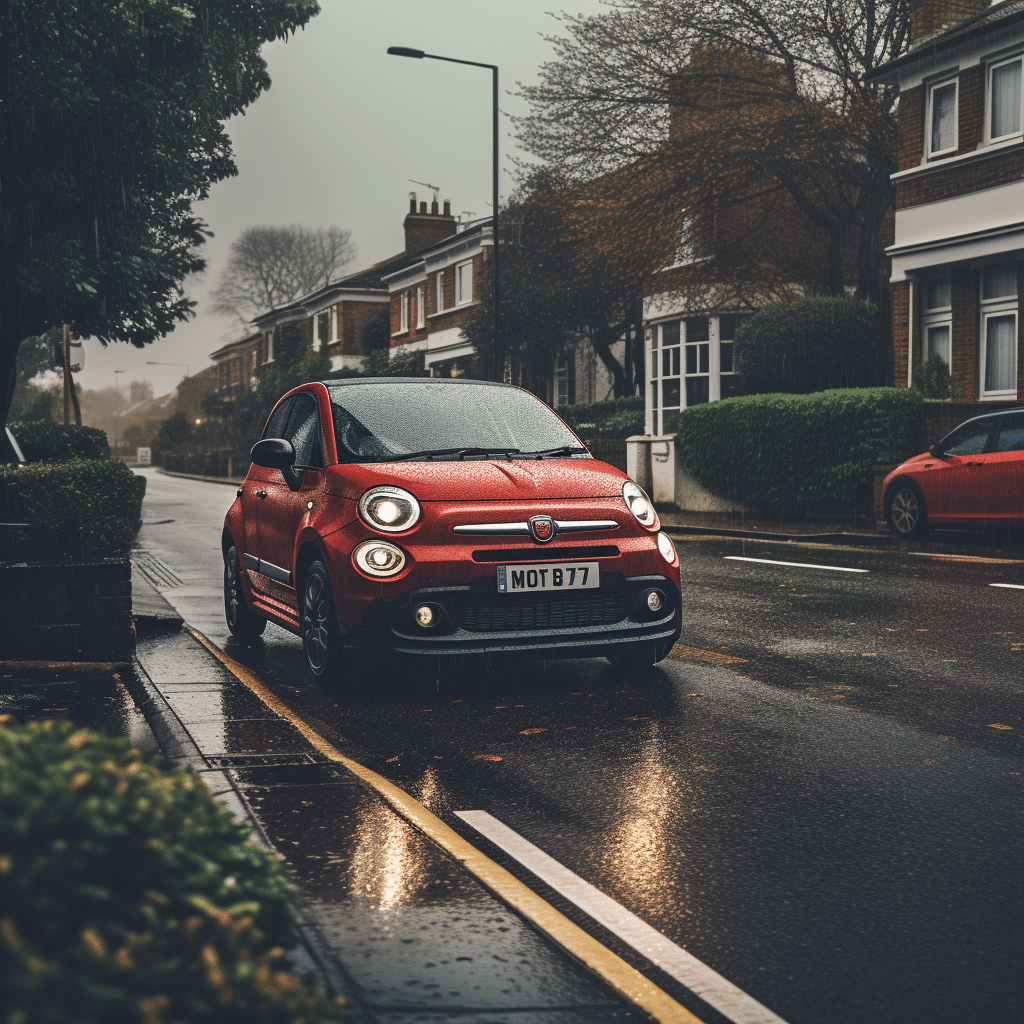
Introduction
Bad weather driving refers to driving in adverse weather conditions such as rain, snow, fog, ice, and high winds. It is important for drivers, especially learner drivers, to understand the rules for driving in bad weather in order to stay safe on the roads.
Understanding the rules for driving in bad weather is crucial because it can help prevent accidents and collisions. Bad weather can reduce visibility, create slippery road conditions, and increase the chances of accidents. By following the rules, drivers can minimise the risks associated with driving in bad weather.
The risks of driving in bad weather include increased chances of accidents and collisions, reduced visibility, poor road conditions, and potential damage to the vehicle. Reduced visibility can make it difficult for drivers to see other vehicles, pedestrians, or obstacles on the road, increasing the risk of accidents. Poor road conditions, such as icy or wet roads, can make it harder to control the vehicle and increase the chances of skidding or hydroplaning. Additionally, bad weather can potentially cause damage to the vehicle, such as from sliding into a curb or colliding with another vehicle.
The rules for driving in bad weather are outlined in The Highway Code. It is important for drivers to follow these rules to ensure their safety and the safety of others on the road. Some of the key rules include adhering to speed limits and adjusting driving behaviour accordingly. This means reducing speed and increasing the distance between vehicles to allow for better reaction time. It is also important to use headlights and fog lights when necessary to improve visibility. Additionally, drivers should be aware of potential hazards such as black ice and adjust their driving accordingly.
Bad weather driving refers to driving in adverse weather conditions, and it is important for learner drivers to understand the rules for driving in bad weather to stay safe on the roads. The risks of driving in bad weather include increased chances of accidents and collisions, reduced visibility, poor road conditions, and potential damage to the vehicle. by following the guidelines provided by the highway code, such as adhering to speed limits and adjusting driving behaviour, drivers can minimise these risks and ensure their safety.
Understanding Weather Conditions
Types of Bad Weather
There are several types of bad weather that can affect driving conditions. These include:
- Rain: Rain can reduce visibility and make roads slippery. It can also lead to hydroplaning, which occurs when a layer of water builds up between the tyres and the road surface, causing the vehicle to lose traction.
- Snow: Snow can reduce visibility and make roads slippery. It can also cause snowdrifts, which can block roads and make them impassable.
- Fog: Fog can reduce visibility and make it difficult to see other vehicles and obstacles. It can also cause slippery roads due to the moisture in the air.
- Wind: Strong winds can make it difficult to control the vehicle, especially when passing high-sided vehicles. It can also cause debris to be blown onto the road, increasing the risk of accidents.
- Extreme Temperatures: Extreme temperatures can cause roads to become slippery and reduce visibility. This can increase the risk of skidding and accidents.
Identifying and Assessing the Severity of Bad Weather Conditions
To identify and assess the severity of bad weather conditions, it is important to cheque weather forecasts, road condition reports, and local advisories. Weather forecasts can provide information on the expected weather conditions for a specific area and time period. Road condition reports can provide information on the current state of the roads, including any closures or hazards. Local advisories can provide additional information about the severity of the weather conditions and any specific precautions that should be taken.
By checking these sources of information, drivers can have a better understanding of the current and expected weather conditions, allowing them to adjust their driving behaviour accordingly. It is important to reduce speed, increase following distance, and be prepared for the specific risks associated with the type of bad weather present.
Preparing for Bad Weather
To prepare for driving in bad weather, there are several important steps you should take. First, it is crucial to check the condition of your vehicle. This includes inspecting the tyres, brakes, lights, and other components. Make sure that the tyres have sufficient tread depth and the correct tyre pressure for the weather conditions. check the brakes to ensure they are in good working order. Verify that all the lights, including the headlights, taillights, and other lights, are functioning properly.
In addition to checking the condition of your vehicle, it is essential to carry essential items with you when driving in bad weather. This includes an emergency kit, extra clothing, and blankets. An emergency kit which should contain items such as a torch, first aid kit, and a spare tyre. Extra clothing and blankets can help keep you warm if you get stuck in bad weather plus a warning triangle to place behind your vehicle just in case you breakdown.
Before driving in bad weather, it is important to perform a final check. This involves inspecting the windshield wipers, demister, headlights, and taillights. Ensure that these components are in good working order and appropriate for the weather conditions. Additionally, check the tyre pressure and tread depth to ensure that the tyres are in good condition.
To ensure that your car is ready for bad weather, regular maintenance and servicing are crucial. This includes changing the oil, checking the brakes, and other fluids. It is also important to use appropriate tyres for specific weather conditions. Different types of tyres, such as winter tyres or all-season tyres, are designed to provide better traction and handling in different weather conditions. Using the right tyres for the specific weather conditions can greatly enhance your safety while driving in bad weather.
Driving Techniques in Bad Weather
General Rules for Driving in Bad Weather
When driving in bad weather, it is important to follow some general rules to ensure your safety and the safety of other drivers on the road. These rules include:
- Reducing speed and increasing following distance: It is crucial to reduce your speed in bad weather conditions, such as rain, snow, or fog. This will give you more time to react to any unexpected hazards and will help you maintain control of your vehicle. Additionally, increasing your following distance will provide you with a buffer zone in case the vehicle in front of you suddenly stops or skids. It is recommended that a four second gap for wet conditions.
- Using headlights and fog lights when necessary: Visibility is often reduced in bad weather, so it is important to use your headlights and fog lights when necessary. This will not only help you see better but also make it easier for other drivers to see you. It is important to note that fog lights should only be used when visibility is significantly reduced, typically when you cannot see for more than 100 metres (328 feet).
Specific Techniques for Driving in Rain
When driving in rain, it is important to take additional precautions to ensure your safety. Here are some specific techniques for driving in rain:
- Avoiding sudden braking and accelerating: Sudden braking or accelerating can cause your vehicle to lose traction and skid on wet roads. To prevent this, it is important to maintain a smooth and steady speed, gradually slowing down or accelerating when necessary.
- Maintaining a steady speed to prevent aquaplaning or hydroplaning: Aquaplaning or Hydroplaning occurs when your vehicle’s tyres lose contact with the road surface due to a layer of water. To prevent this, it is important to maintain a steady speed and avoid sudden movements, such as sharp turns or braking. Additionally, ensuring that your tyres have sufficient tread depth and are properly inflated can help improve traction on wet roads.
Specific Techniques for Driving in Snow and Ice
Driving in snow and ice requires extra caution and specific techniques to ensure your safety. Here are some techniques to follow when driving in snow and ice:
- Using gentle braking and steering movements: When driving on slippery surfaces, it is important to avoid sudden or aggressive braking and steering. Instead, apply gentle pressure to the brakes and make smooth, gradual steering movements to maintain control of your vehicle.
- Keeping a safe distance from other vehicles: In snowy or icy conditions, it takes longer to stop your vehicle. Therefore, it is important to keep a safe distance from the vehicle in front of you to allow for increased stopping distance. This will give you more time to react to any sudden changes in traffic or road conditions and should be ten times the normal distance.
Specific Techniques for Driving in Fog
Driving in fog can significantly reduce visibility, making it important to take specific precautions. Here are some techniques for driving in fog:
- Using dipped headlights and fog lights: In foggy conditions, it is important to use your dipped headlights to improve visibility without causing glare. Additionally, if your vehicle is equipped with fog lights, you should use them to further enhance visibility. However, it is important to switch off fog lights when visibility improves to avoid dazzling other drivers.
- Slowing down and using windshield demisters: Fog can make it difficult to see the road ahead, so it is important to reduce your speed and drive at a safe and appropriate speed for the conditions. Additionally, using your windshield demisters can help keep your windshield clear of condensation, improving visibility.
By following these general rules and specific techniques for driving in bad weather conditions, you can help ensure your safety and the safety of others on the road. Remember to always stay alert, be aware of changing road conditions, and adjust your driving accordingly.
Safety Precautions
Safety Precautions for Driving in Bad Weather
Driving in bad weather can be challenging and potentially dangerous. It is important to take the necessary safety precautions to ensure a safe journey for yourself and other road users. Here are some key safety precautions to keep in mind when driving in bad weather:
Buckling Up and Ensuring All Passengers are Properly Restrained
One of the most important safety precautions is to always wear a seatbelt and ensure that all passengers in the vehicle are properly restrained. Seatbelts are designed to keep you securely in your seat and can greatly reduce the risk of injury in the event of an accident. It is crucial to make sure that seatbelts are worn correctly, with the lap belt positioned low across the hips and the shoulder belt crossing the chest and shoulder.
For passengers who are children, it is essential to use appropriate child seats or booster seats that are suitable for their age, height, and weight. These restraints are specifically designed to provide optimal protection for children in the event of a collision.
Avoiding Distractions and Focusing on the Road
Another important safety precaution is to avoid distractions and maintain focus on the road. Distractions can significantly impair your ability to react to changing road conditions and can increase the risk of accidents, especially in bad weather. It is crucial to avoid using mobile phones, eating, drinking, or engaging in any other activities that can divert your attention away from driving.
Additionally, it is important to be aware of your surroundings and pay attention to the road conditions. This includes keeping an eye out for hazards such as slippery surfaces, reduced visibility, or debris on the road. By staying focused and alert, you can better anticipate and respond to potential dangers.



